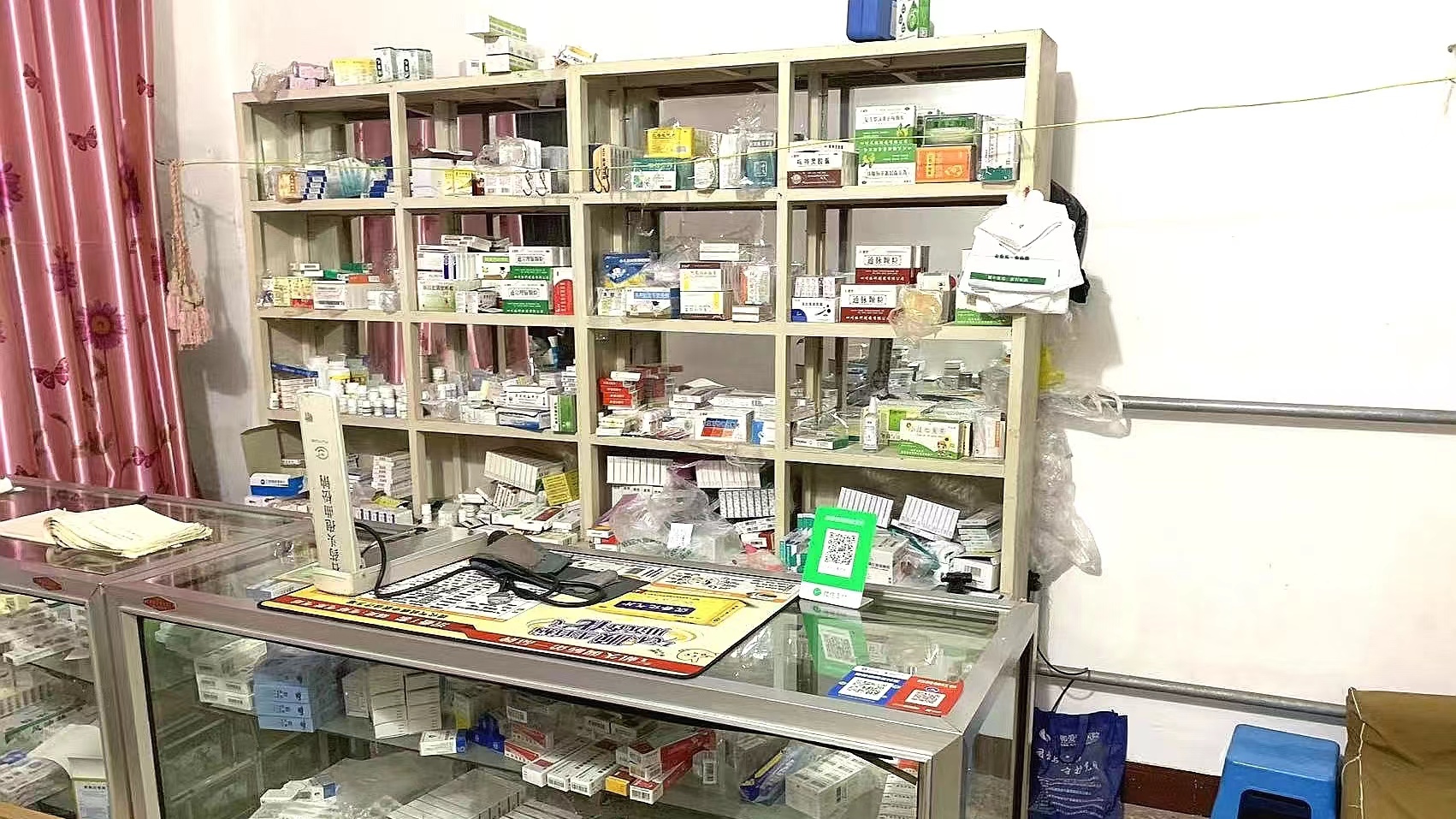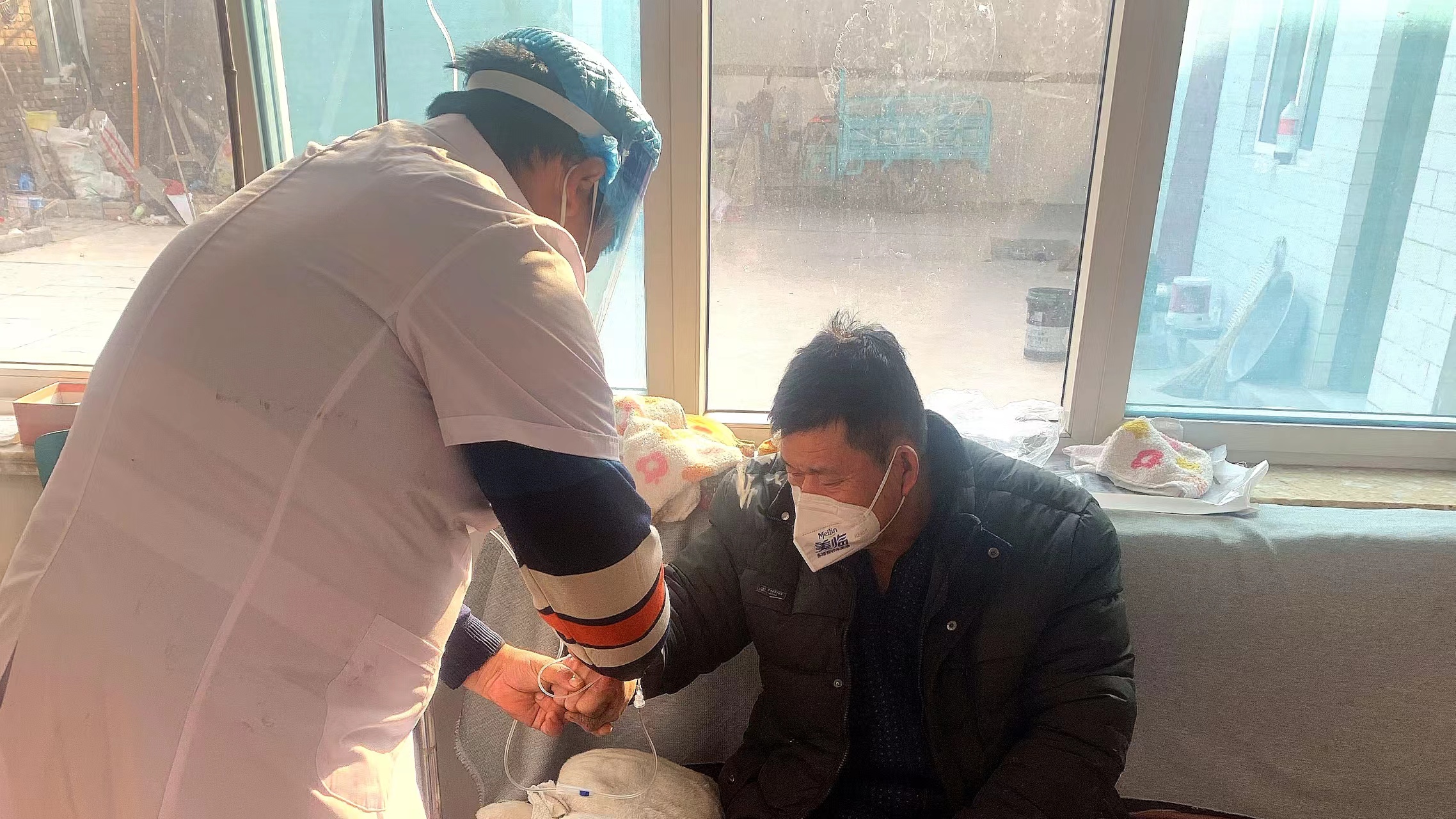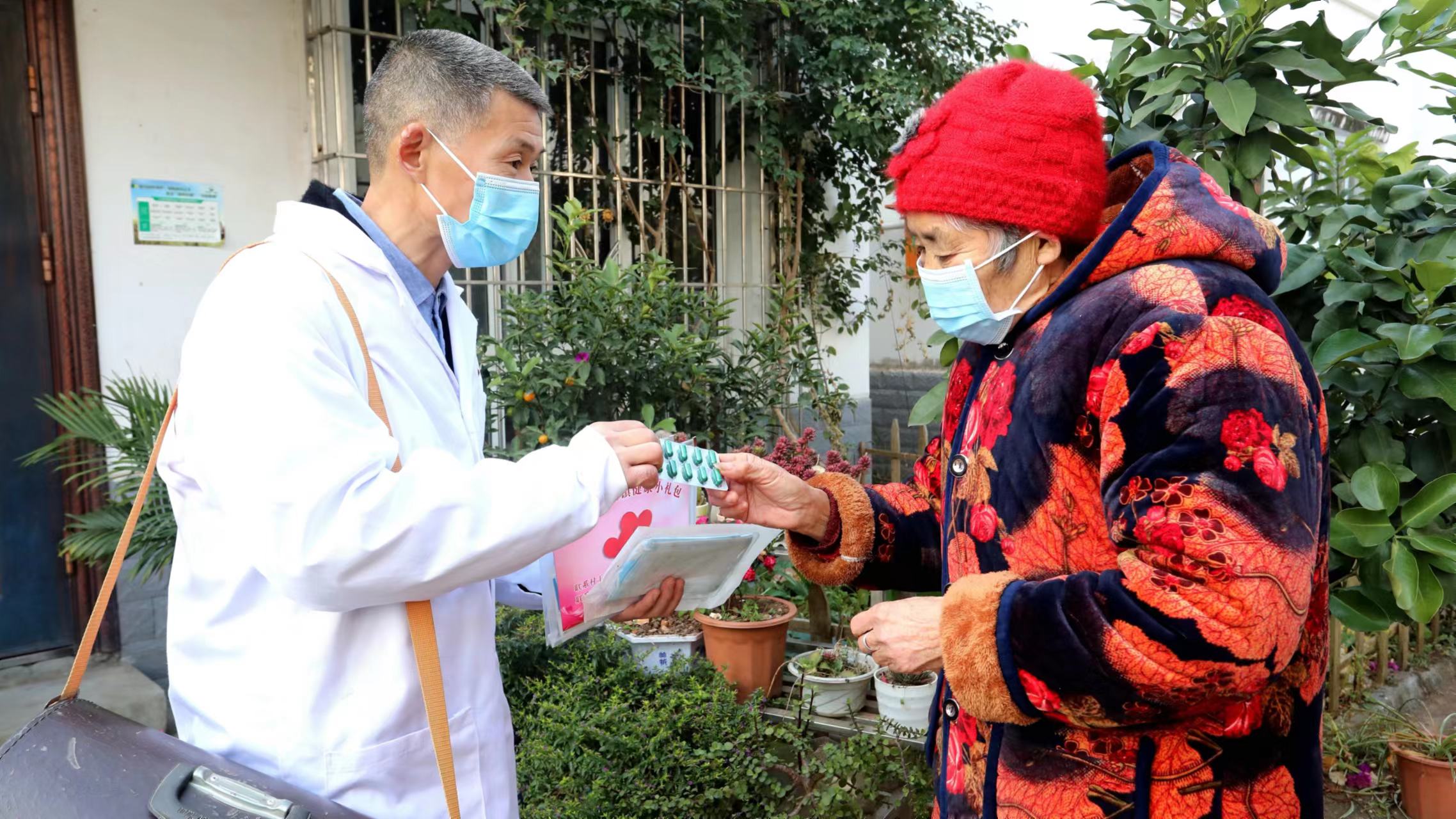
The medicine cupboard in Li Jun's clinic, Xisunzhuang Village, Beizhangzhuang Town, Hanshan District, Handan, Hebei Province, China, January 4, 2023. /courtesy of Li Jun
The medicine cupboard in Li Jun's clinic, Xisunzhuang Village, Beizhangzhuang Town, Hanshan District, Handan, Hebei Province, China, January 4, 2023. /courtesy of Li Jun
For village doctor Li Jun, the first wave of COVID-19 infections in his village is almost over, and he is bracing for a possible second during the coming Spring Festival.
A time for family, Spring Festival in China marks the biggest human migration in the world which happens once a year. Hundreds of millions of people travel back to their homes, with many returning from big cities to rural villages or townships. Experts predict the trend in following weeks may lead to more COVID-19 infections, challenging limited medical resources in rural China.
"Over 60 percent of our villagers have been infected by the virus in December," said the 53-year-old, who has been working as a village doctor for almost 30 years.
Li's village is about 15 kilometers from downtown Handan, north China's Hebei Province. As soon as China eased its restrictions on the virus, the contagious Omicron variant quickly spread across the city and its suburban areas, as many villagers commute to the city.
"We experienced the shortage of fever and cough medicines when the cases peaked in mid December, so I've stocked more medicines for the coming Spring Festival," said Li. "Actually, most villagers have already prepared medicines, masks and sanitizers at home."

Li Jun treats a patient at the patient's home, Xisunzhuang Village, January 4, 2023. /courtesy of Li Jun
Li Jun treats a patient at the patient's home, Xisunzhuang Village, January 4, 2023. /courtesy of Li Jun
Li's team of three in the village clinic cover 1,800 villagers, among which more than 300 are over 65 years old. Doctors know their patients well since they live in the neighborhood.
In Li's village, locals observe the tradition of greeting all elder relatives on the first day of the lunar new year going door-to-door. Along with other gatherings, the celebrations could expose elderly to a higher risk of getting infected.
Li said he would keep a close eye on those who have underlying health conditions. Having three comprehensive hospitals to turn to, he could transfer his patients there for treatment if severe symptoms are spotted.
Plans differ among groups
Most people who already got COVID-19 are planning to return to their hometowns to celebrate the Spring Festival during the week-long vacation, though some are worried about getting infected again with new variants.
But for some elderly people, they are inclined to take a conservative approach. Villager Wang Hui's parents are over 90 years old, and both of them have underlying health conditions.
Coupled with the risk of contracting COVID-19, Wang has been thinking about canceling the annual celebrations. She told her daughter who works in Beijing not to come back to the village during the festival rush as all of them have escaped the virus' previous attacks.
"Let's stay negative as long as we can and see how the situation develops. Perhaps meeting in spring is a better choice for us," the 58-year-old said.
Preparations beforehand
Anticipating possible pressure on the rural healthcare system, the Chinese government issued three national guidelines in December to prepare rural regions for possible waves of infection.
In these guidelines, the Joint Control and Prevention Mechanism of the State Council urged local governments to increase staffing in rural clinics and hospitals, facilitate vaccination and boost the supply of medicines for fever, cough and common underlying diseases.
All hospitals in townships are required to set up fever clinics that remain open 24 hours a day. They need to train village doctors as well to improve their skills in treating COVID-19 related symptoms, from using rapid antigen test kits to identifying severe cases.
Jiao Yahui, director of the medical administration bureau, National Health Commission (NHC), said there are two key aspects to help support the rural medical system to deal with the mounting pressure.
One is the supply of medicines, and the other is the timely transfer of severe cases to better hospitals, Jiao said in an interview with China Media Group last week.
Based on the tiered diagnosis and treatment model, the mechanism of setting up green channels for transferring serious patients from grassroots clinics to larger hospitals has been promoted since 2015.
On top of more vehicles and green channels to secure timely transfers, experts said online medical consultations can also be used to seek medical support.

A village doctor tells an elderly woman how to take medicines from an anti-COVID-19 package, Pengcun Village, Renshou County, Meishan, Sichuan Province, China, December 29, 2022. /CFP
A village doctor tells an elderly woman how to take medicines from an anti-COVID-19 package, Pengcun Village, Renshou County, Meishan, Sichuan Province, China, December 29, 2022. /CFP
As an important area of poverty alleviation, China has been making efforts to build a stronger rural medical care system.
From 2012 to 2020, the central government allocated a total of 1.4 trillion yuan (roughly $202 billion) to support the development of health programs in 25 provinces, data from the NHC shows. More than 170 billion yuan ($24.7 billion) has been spent to support the construction of 150,000 medical and health institutions in underdeveloped regions.
Currently, China has 23,000 county-level medical and health institutions, 35,000 township-level health centers, and 599,000 village clinics at the end of 2021, according to NHC. Over 6.3 million personnel work in these institutions and clinics, and they have remained devoted to China's fight against COVID-19.